Let's face it—cracking Google's first page isn't magic, but sometimes it feels like you need a crystal ball, a library of algorithm patents, and maybe a caffeine IV just to keep up.
If you've ever wondered why some sites skyrocket while others languish in SERP purgatory, this blog post is for you.
Whether you're new to SEO or a seasoned marketer tired of chasing algorithm shadows, this is your practical, actionable playbook for decoding search engine ranking factors, understanding what's working right now, and (most importantly) how you can turn those insights into higher SERP positions, more clicks, and measurable business growth.
Ready to finally get clear on what really produces results?
Let's dive in.
What Are SEO Ranking Factors?

Before you try to impress Google (or Bing, or anyone else), you need to know what the game actually is. SEO ranking factors are the specific criteria search engines use to decide which web pages deserve the top spots for a given keyword.
These aren't random—they're the backbone of how search engines deliver users relevant, useful, and trustworthy results.
Definition of Search Engine Ranking Factors
Think of search engine ranking factors as a giant checklist that Google, Bing, and other engines run through every time someone hits "search." They scan your website, your content, your links, and even your code, weighing hundreds of variables to see if you've got the goods to rank.
Some factors are direct and measurable, while others are more about signals that hint at quality or relevance.
Difference Between Direct Ranking Signals vs. Indirect Signals
As a SaaS professional or eCommerce brand owner, you're all about driving traffic, boosting conversions, and scaling growth.
Here's a table to help you understand the differences between these two signals while optimizing your site and getting ahead of the competition:
|
Aspect |
Direct Ranking Signals |
Indirect Ranking Signals |
|
What They Are |
These are the core factors that tell search engines your SaaS tool or eCommerce store is exactly what a user is searching for. Think of them as the main pitch in your sales funnel. |
These are supporting players that don't directly prove relevance but boost your site's credibility and user experience. They're like the upsell that makes your offer irresistible. |
|
Examples |
|
|
|
How They Impact Ranking |
These are your MVPs. Search engines prioritize them to rank your SaaS landing page or product high when they match a user's query. Nail these, and you're in the top spots. |
These act like a bonus multiplier. They won't make or break your ranking alone, but can push you above competitors when paired with strong direct signals. |
|
Why They Matter to You |
For SaaS, keywords in your feature pages and backlinks from industry leaders drive sign-ups. For eCommerce, optimized product descriptions and reviews boost sales. Focus here to dominate search results. |
A fast, mobile-friendly site keeps users from bouncing, while social buzz on X or a slick UX can tip the scales in tight races. These are your polish for better conversions. |
|
Measurement |
Easy to track with tools like Google Analytics or Ahrefs (e.g., keyword rankings, backlink quality, CTR on your checkout page). |
Trickier to measure directly (e.g., how much does a fast site really lift your rank?). Use tools like Hotjar for engagement or PageSpeed Insights for load times. |
|
Example in Action |
A user searches "best project management tool," and your SaaS page with "Project Management Software" in the title, optimized content, and links from Forbes ranks #1. That's direct signals winning. |
That same page loads in 1.5 seconds, has a 4.8-star rating on G2, and got 1,000 shares on X. Those indirect signals make it even more likely to stay on top. |
Direct signals are your bread and butter—optimize your keywords, secure high-quality backlinks, and make your pages clickable to drive traffic and conversions. Indirect signals are your secret sauce; a fast, user-friendly site with social proof can give you the edge in crowded markets.
Use tools like SEMrush or Google Search Console to track your progress, and keep testing to see what substantially impacts your audience.
Importance of Understanding Website Ranking Criteria for SEO Planning
If you want to create an SEO plan that actually works, you need to know which website ranking criteria matter most for your goals.
Not all factors are weighted equally—and what moves the needle for a local business might be different from what moves the needle for a SaaS giant or a content-driven blog. The more you understand the "why" behind the factors, the smarter your SEO decisions will be.
SERP Rankings in the Age of AI

SEO isn't just about keywords and backlinks anymore.
The rise of AI in search has changed the game, making it even more crucial to focus on quality, relevance, and user satisfaction.
Google's AI Overviews and Zero-Click Search Results
If you've noticed that Google is answering more questions right in the search results—often without anyone needing to click through to a website—you're seeing the rise of zero-click searches and AI Overviews.
Google's recent algorithm updates, powered by AI, pull information directly from authoritative sites and present it in rich snippets or "snapshots." That means you need to optimize not just for ranking, but for visibility within these new SERP features.
How AI Impacts Direct Traffic
Zero-click searches might seem like a headache (why optimize if no one clicks?), but they also represent an opportunity.
If your content is structured for AI Overviews—using schema markup, FAQs, and concise answers—you can capture brand visibility, drive awareness, and become the source Google (and users) trust, even if the traditional CTR metric changes.
Top On-Page SEO Ranking Factors in 2025
Let's get practical: what on your website actually helps you rank?
Before we unpack each one, here's a table that compares today's most important on-page SEO factors and their direct impact on your SERP position:
|
On-Page SEO Factor |
Impact on SERP Position Factors |
How to Optimize in 2025 |
|---|---|---|
|
Content Depth & Authority |
Very High |
Build long-form, in-depth, E-E-A-T content |
|
Keyword Optimization |
High |
Use primary/secondary naturally; semantic SEO |
|
Internal Linking |
High |
Topic clusters and contextual links |
|
User Engagement Metrics |
Medium-High |
Improve dwell time, lower bounce rate |
|
Schema Markup |
Medium |
Use FAQ/How-To/Review schema for snippets |
Simply put, prioritize deep, meaningful content, incorporate keywords naturally (no keyword cramming!), link internally with purpose, drive user engagement, and use schema to help search engines love your site.
Now, let's take a deeper look at these SEO ranking factors.
Content Depth and Topical Authority
Google's search signals are screaming for quality and depth. "E-E-A-T" stands for Experience, Expertise, Authoritativeness, and Trustworthiness.
In practice, this means:
- Cover topics in depth (aim for 1500+ words when it makes sense)
- Include expert insights, case studies, and original research
- Use author bios and cite reputable sources
Don't just create long articles—connect them! Use topic clusters, internal links, and pillar pages (like your SaaS Marketing and Content Marketing pages) to show Google you're an authority on your subject. This strengthens your site's overall topical authority, which is a key Google search signal.
Keyword Optimization (But Make It Natural)
Old-school keyword stuffing? Dead and buried.
In 2025, it's all about context and user intent.
Here are three tips to help optimize:
- Primary and Secondary Keywords: Target both, but weave them in naturally. For instance, include "seo ranking factors" as your main focus, and sprinkle in "google ranking factors," "search engine ranking factors," and others as relevant to the topic.
- Keyword Proximity and Semantic SEO: Don't just repeat keywords. Use synonyms, related phrases, and natural language. Google's algorithms now understand context better than ever.
- Answer Questions and Use Long Tails: Optimize for the questions your users are asking, not just one—or two-word phrases.
These SEO ranking factors help you win rich snippets and voice search results. This shift means a more natural, user-centric approach to SEO, not only ranking you higher but also connecting more effectively with users seeking your content.
User Engagement Metrics
Google's algorithms pay attention to how people interact with your pages.
Pay attention to:
- Dwell Time: The longer someone spends on your page, the more Google sees your content as valuable.
- Bounce Rate: If users land on your site and leave immediately, it signals that your page didn't meet their expectations.
- Click-Through Rate (CTR): Pages with higher CTRs often climb higher in the search results.
Engagement metrics are indirect SEO ranking signals, but they can have a big impact on your search engine ranking factors over time. The more you keep users engaged, the more search engines reward you.
Structured Data and Schema Markup
Adding schema markup to your site helps Google understand your content—and potentially feature it in eye-catching SERP elements like FAQs, reviews, recipes, and more. Use Google's Structured Data Testing Tool, Schema.org, or plugins like Yoast SEO to add and test your schema. This gives your pages a better shot at earning valuable real estate in the search results.
Technical SEO Factors That Impact Rankings for SaaS and eCommerce

Your SaaS landing pages or eCommerce product listings need to be fast, mobile-friendly, crawlable, and secure to rank high and drive sign-ups or sales. Technical SEO ranking factors are like the engine under the hood—without it, even the slickest website won't get far.
Below, I've expanded on the key technical SEO ranking factors, with actionable steps to help your SaaS platform or online store shine in 2025.
Page Speed and Core Web Vitals: Make Your Site Feel Instant
Speed isn't just a luxury—it's a dealbreaker.
Google's Core Web Vitals measure how your site feels to users, and in 2025, they're a major ranking factor. For SaaS, a slow dashboard page can send prospects running. For eCommerce, a laggy checkout can kill sales—85% of mobile shoppers ditch carts if pages drag.
Here's what you need to nail:
- Largest Contentful Paint (LCP) tracks how fast your main content (like a product hero image or pricing table) loads. Aim for under 2.5 seconds to keep users engaged and Google happy. To get there, compress images (use WebP for product photos), cut down on heavy JavaScript, and use a Content Delivery Network (CDN) like Cloudflare for global speed.
- First Input Delay (FID) measures how quickly your site responds to clicks, like adding an item to the cart or signing up for a trial. Keep it under 100 milliseconds by minimizing third-party scripts (like analytics or chat widgets) and optimizing your code with tools like Webpack.
- Cumulative Layout Shift (CLS) checks if your page layout shifts during loading (e.g., a "Buy Now" button moving mid-click). Aim for a score below 0.1 by setting fixed sizes for images and videos and avoiding pop-ups that rearrange content.
Use Google PageSpeed Insights or Lighthouse (in Chrome DevTools) to check your scores and get tailored fixes. For SaaS, tools like New Relic can monitor app performance. For eCommerce, platforms like Shopify often have built-in speed analytics.
A 1-second delay can cut conversions by 7%, so test key pages (pricing, products) regularly on desktop and mobile.
Mobile-First Indexing: Nail the Mobile Experience
Google ranks your mobile site first, and with 60%+ of searches on phones, your SaaS tool or store must shine on small screens.
A poor mobile UX tanks rankings and conversions.
Don't forget to use responsive design (e.g., Tailwind CSS for SaaS, Shopify themes for eCommerce). Ensure all content (demos, filters) works on mobile, with 16px+ fonts and tap-friendly buttons (48x48 pixels). Optimize for mobile networks by checking Google Search Console's Mobile Usability report for issues like tiny text.
Mobile-unfriendly sites drop in rankings for searches like "best CRM" or "buy sneakers online."
Crawlability and Indexing: Help Google Find Your Gold
If Google's crawlers can't access your site, your pages won't rank—bad news for SaaS sites with complex apps or eCommerce stores with tons of products.
Here's what to do:
- XML Sitemaps: Submit an updated sitemap via Google Search Console to highlight key pages (e.g., SaaS features, eCommerce categories). Update dynamically for new products or blogs.
- Robots.txt: Ensure you're not blocking important pages (like product listings) while keeping irrelevant ones (like admin panels) off-limits.
- Canonical Tags: Prevent duplicate content issues (e.g., similar products in eCommerce or audience-specific landing pages in SaaS).
- Fixing Crawl Errors: Monitor Google Search Console for 404s or redirects. Redirect discontinued product pages for eCommerce and secure dynamic pages for SaaS.
Crawlability ensures Google indexes your best pages, boosting visibility for searches like "inventory management tool" or "vegan skincare." Audit with Screaming Frog to prioritize high-value pages.
HTTPS and Website Security: Lock It Down
Google and users love secure sites. HTTPS is a must for trust and rankings, especially for SaaS sign-ups and eCommerce checkouts.
- What to Do: Install an SSL certificate (free via Let's Encrypt or hosts like AWS). Ensure all resources load securely. Update your CMS (WordPress, Shopify) and use secure payment gateways (Stripe, PayPal) to protect users.
- Why It Matters: HTTPS is a confirmed ranking factor—95% of top sites use it in 2025. It builds trust, reducing bounce rates and boosting conversions.
Prioritizing security isn't just about pleasing Google; it's about building a foundation of trust with your users. When they feel safe on your site, they're more likely to engage, convert, and return, making HTTPS a win-win for everyone.
Off-Page SEO and Google Search Signals

You can do everything right on your own site, but off-page factors still play a huge role in your search ranking signals.
Here are the most pertinent areas to examine.
Backlinks Still Matter (But Quality Over Quantity)
For starters, let's talk about one of the most enduring elements of SEO: backlinks. While their importance hasn't waned, the emphasis has definitely shifted.
Here's what to concentrate on:
- Authority: Get links from reputable, relevant sites
- Relevance: Links should make sense contextually
- Anchor Text: Mix branded, generic, and exact-match anchors
- Disavowing Toxic Links: Use Google's Disavow Tool to distance yourself from spammy links
Backlinks are still among the most important google seo factors—but it's about quality, not just volume.
Brand Mentions and Digital PR
Brand mentions, even without a link, now factor into Google's understanding of your website's authority. Digital PR—getting your brand name into the right articles, podcasts, and news stories—can pay major SEO dividends.
You can build brand presence beyond links using these methods:
- Guest posts
- Podcast interviews
- HARO (Help a Reporter Out)
- Online reviews and testimonials
Google's entity-based approach recognizes your business even without direct links, making these SEO efforts worthwhile.
Social Signals and SERP Indirect Influence
Social media isn't a direct ranking factor (according to Google), but it absolutely influences visibility, engagement, and, ultimately, your SEO.
The real impact of this indirect influence includes:
- Increased visibility can lead to more backlinks
- Viral content attracts attention (and links)
- Engaged social audiences may amplify your reach
Don't neglect your brand's presence across LinkedIn, Twitter/X, Facebook, Instagram, and beyond.
Behavioural and User Experience Signals Google Tracks
A high CTR tells Google your page is what users want.
You can boost it by:
- Writing irresistible meta titles and descriptions
- Using rich snippets (schema helps here!)
- Offering clear, compelling value in your search result
These metrics show whether visitors are satisfied with your content. If users spend time on your site (high dwell time) and don't bounce right away, Google takes notice.
Roketto Tip: Are you matching your content to what people actually want? Make sure you're covering informational, navigational, and transactional intents on your most important pages.
Local SEO Ranking Factors (If Applicable)

If your business relies on local customers, these factors are critical for ranking in Google's "map pack" and local results.
- NAP Consistency: Make sure your business Name, Address, and Phone number are identical everywhere online
- Local Reviews, Citations, and Proximity: Encourage reviews, get listed on top directories, and optimize for keywords plus location (e.g., "seo services in Toronto")
- Google Business Profile Optimization: Keep your profile updated with photos, business hours, and posts to stand out locally
By paying close attention to these local SEO factors, you're not just optimizing for search engines; you're making it easier for real people in your community to find and connect with your business. It's all about being visible where it matters most, right in your neighborhood.
Emerging SEO Trends and Future Search Ranking Signals
SEO never stands still.
Here's what you need to keep an eye on for the future:
AI-Generated Content and Google's Helpful Content Updates
AI is now an omnipresent force in content creation, but Google is increasingly emphasizing "helpful" content.
Therefore, it's crucial to leverage AI as a tool to enhance your content rather than relying on it entirely. This means every piece of AI-generated content must undergo thorough review and editing to ensure it delivers genuine value to the reader while following Google's content guidelines.
Voice Search and Conversational Queries
More people are searching by voice (think: "Hey Google, what are the top google ranking factors this year?").
This means two things:
- Optimize for natural language, FAQs, and long-tail keywords
- Create content that answers questions directly and conversationally
Adapting to these changes will be key to maintaining strong SEO performance in the evolving digital landscape.
Search Generative Experience (SGE) and AI Snapshots
Google's new AI-powered results layer, SGE, combines generative answers with traditional search results. To get your content featured, focus on using passage indexing and providing concise, well-structured answers.
Additionally, target "answer" and "how-to" queries to increase your chances of securing prominent placements.
Mastering SEO Ranking Factors for Real Results

Google algorithm updates will keep rolling out, new search ranking signals will emerge, and website ranking criteria will always evolve. But if you focus on the essentials covered here—and stay curious, adaptable, and committed to your audience—you'll be in a strong position to grow your rankings, traffic, and business.
Ready to take your SEO to the next level?
Contact us at Roketto and let's climb those rankings together!

Chris Onyett
Chris is one of the managing partners at Roketto. His area of expertise is digital marketing and loves sharing and educating on topics like Google Ads, CPC bidding tactics, Google Analytics, and marketing automation. When Chris isn't in the office, he enjoys playing volleyball, mountain biking, and hiking with his American Eskimo.











2.png)
2.png)









